Centipedes come in a variety of colours. Some of the most unusual are those that exhibit bright, eye-catching colours, such as those with blue legs.
Contents
What is a centipede?
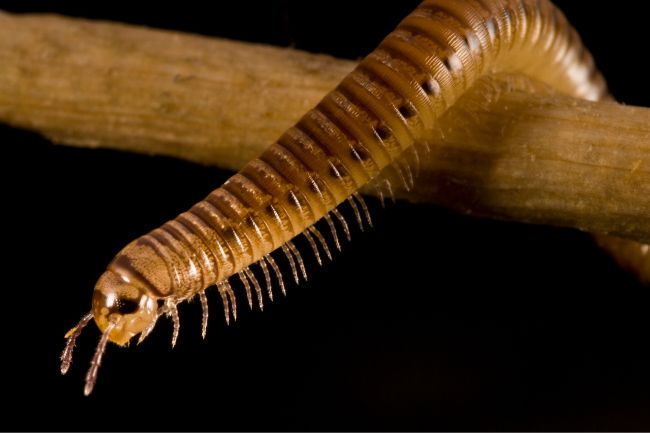
Centipedes are a group of arthropods with elongated bodies and one leg per body segment. This means that they can have between 15 and 177 pairs of legs, despite their name meaning 100 legs.
Centipedes are often confused with millipedes, which have two legs per body segment. As well as morphological differences, the two groups also have vastly different lifecycles, with millipedes being largely detritivores, eating dead wood and other plant matter. Centipedes by comparison are ferocious hunters, who feed on insects, amphibians and even small rodents in the case of some of the larger species.
In order to help them do this, they have a set of venomous claws at the front of their body, adapted legs they can use to inject venom into their prey. This can be extremely painful, even for larger animals such as humans.
There are around 3,000 centipedes across the world, though it is thought roughly 8,000 may exist. They are found on all continents aside from Antarctica and have adapted to live in a wide range of habitats, from rainforests to deserts.
Also read: Centipedes Have 100 Legs: Myth or a Reality (Let’s Explore)
Why are some centipedes blue?
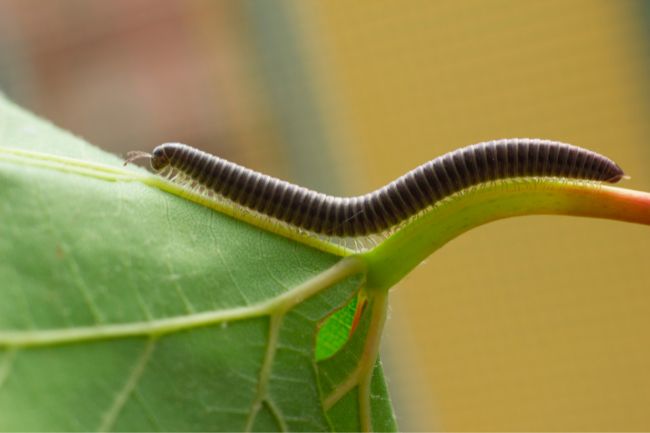
Many arthropods, such as insects, practice what is known as ‘warning colouration’. This is where they display bright colours and striking patterns to tell predators that they are equipped with some kind of defence. This may be a poison that the animal will ingest if they eat them, or it may be the fact they have fangs or a stinger.
While centipedes may not appear to be dangerous from the outside, many of them have venomous claws, with which they can cause a seriously painful nip. Not all centipedes decide to declare this, however, perhaps because they themselves are hunters, and they would rather remain camouflaged so as better to ambush their prey.
It may be that those most likely to opt for warning colouration are those that are more visible to larger predators, such as centipede species that spend more time in the open.
Also read: A List of 4 Centipedes with Yellow Legs
Blue legged centipedes
Common Desert Centipede (Scolopendra polymorpha)
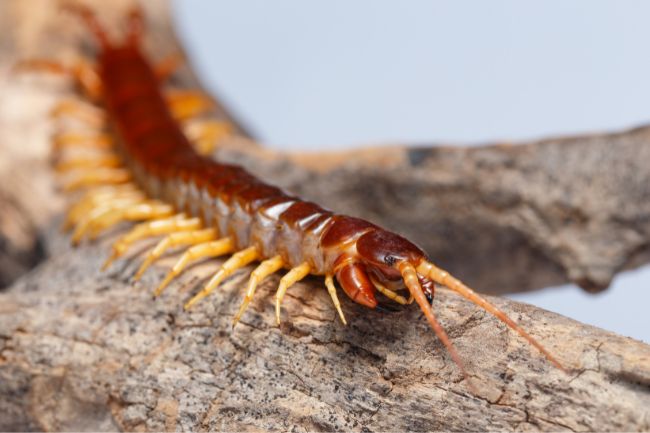
The common desert centipede is a particularly fascinating species when it comes to colour. Its Latin name ‘polymorpha’ stems from the fact that it comes in many different colour morphs. Most commonly it is an orangey brown with darker stripes, however, it can also be yellow, red and most unusually blue.
Its blue colour morph is particularly common in California and is almost indigo in colour across the whole body, with darker blue stripes. The species is also found across much of the Southern Western United States into Mexico.
While its venom can cause a painful sting to humans, it is not generally dangerous, and rarely bites humans unless handled. Pets may be more vulnerable due to their natural curiosity, however, they will also be unlikely to die from a bite.
Also read: Centipedes’ Eyes: How Many, How Do They Use Them & More!
Minor Blue Leg (Rhysida longipes)
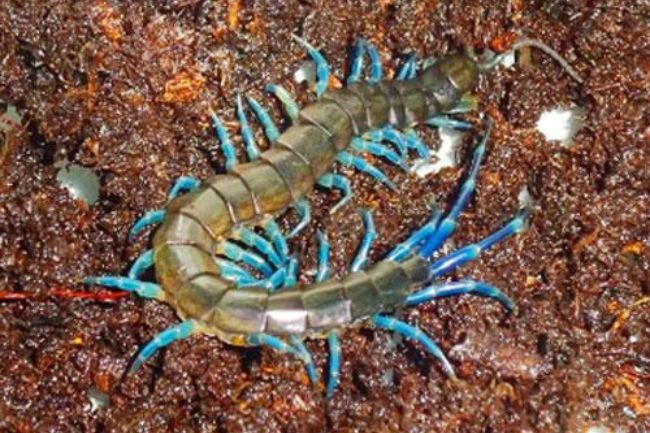
The minor blue leg centipede doesn’t always live up to its name, with many specimens appearing to have yellow legs. However, a blue tinge can be seen on certain specimens, giving this species its name. Also known as the red-tailed centipede, for the red colouration at the end of its body, this species may not always be considered one of the blue-legged species.
Chinese red-headed centipede (Scolopendra subspinipes)
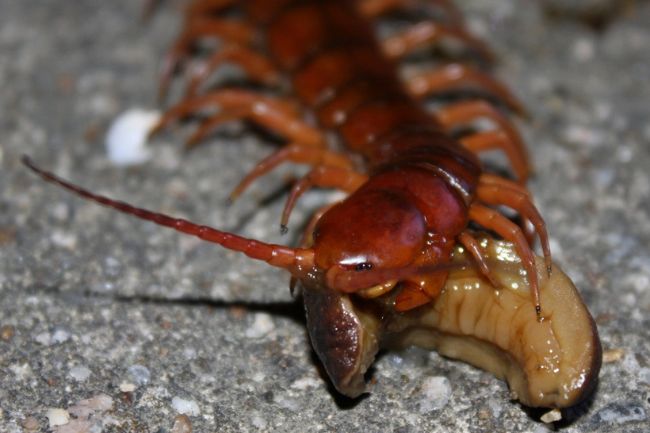
This larger centipede, at around 20cm (7.87 in) in length, is found across much of the world, including Asia, Australia and central and South America. As an adult, the centipede has an orangey-red colour, with a red head. However, juveniles have a blue head and legs, which change colour as they age.
The Chinese red-headed centipede is a particularly irritable creature, known to strike with little provocation. Its venom is unpleasant, however, it rarely proves fatal. In pets, it is likely a bite would cause some discomfort.
Also read: A List of Centipedes that are Poisonous to our Pets
Scolopendra alcyona
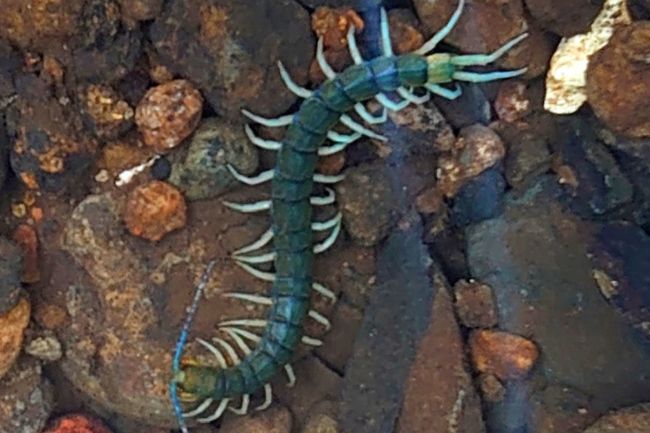
It’s always exciting when a new species is discovered, and even more so when they vary significantly from other closely related species. There are few aquatic centipedes that are known of, meaning the recent discovery of Scolopendra alcyona in Japan and Taiwan is a particularly interesting one.
This bluey-green centipede is able to survive and hunt in water, and its venom has been found to be significantly painful for humans. With such a strong venom, it is likely to also seriously affect dogs and other pets if bitten.
Florida Blue Centipede (Hemiscolopendra marginata)
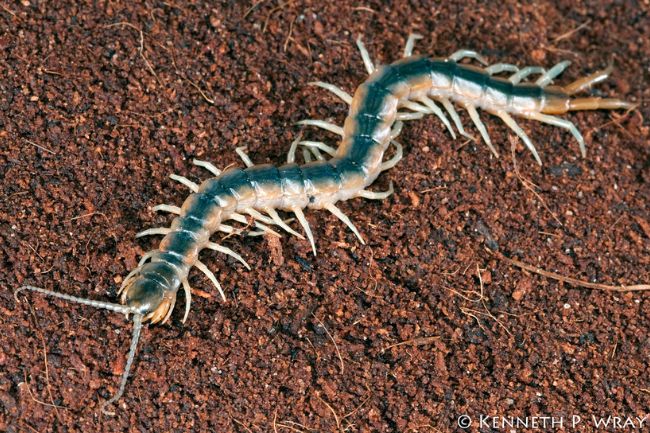
Also known as the Eastern bark centipede, this blue centipede does not share the vivid colours of some of our other featured species. Instead, its body is more of a muted blue, while the legs may be blue-tipped. Colour can vary significantly in this species, meaning some individuals lack the blue entirely. Despite its name, it is found across much of the southern United States.
Although a bite from this species is never going to be pleasant, most people describe it as a mild sting rather than a more painful reaction. Pets are also likely to find a sting from these species unpleasant, but not life-threatening.
Also read: Centipedes Life Span: How Long do They Live?
Beautiful blue
Blue is not the most common colour in the centipede world, with most species being brown, black or red. The reason that this colour is less common isn’t obvious, though it may be that many species prefer to blend into their background instead of standing out.
There is certainly something eye-catching and beautiful about blue animals, and many blue centipedes are kept as pets due to their interesting colours. Still, it is likely that blue is also a warning colour for these centipedes, letting the world know they are a force to be reckoned with, as dangerous as they are beautiful.

